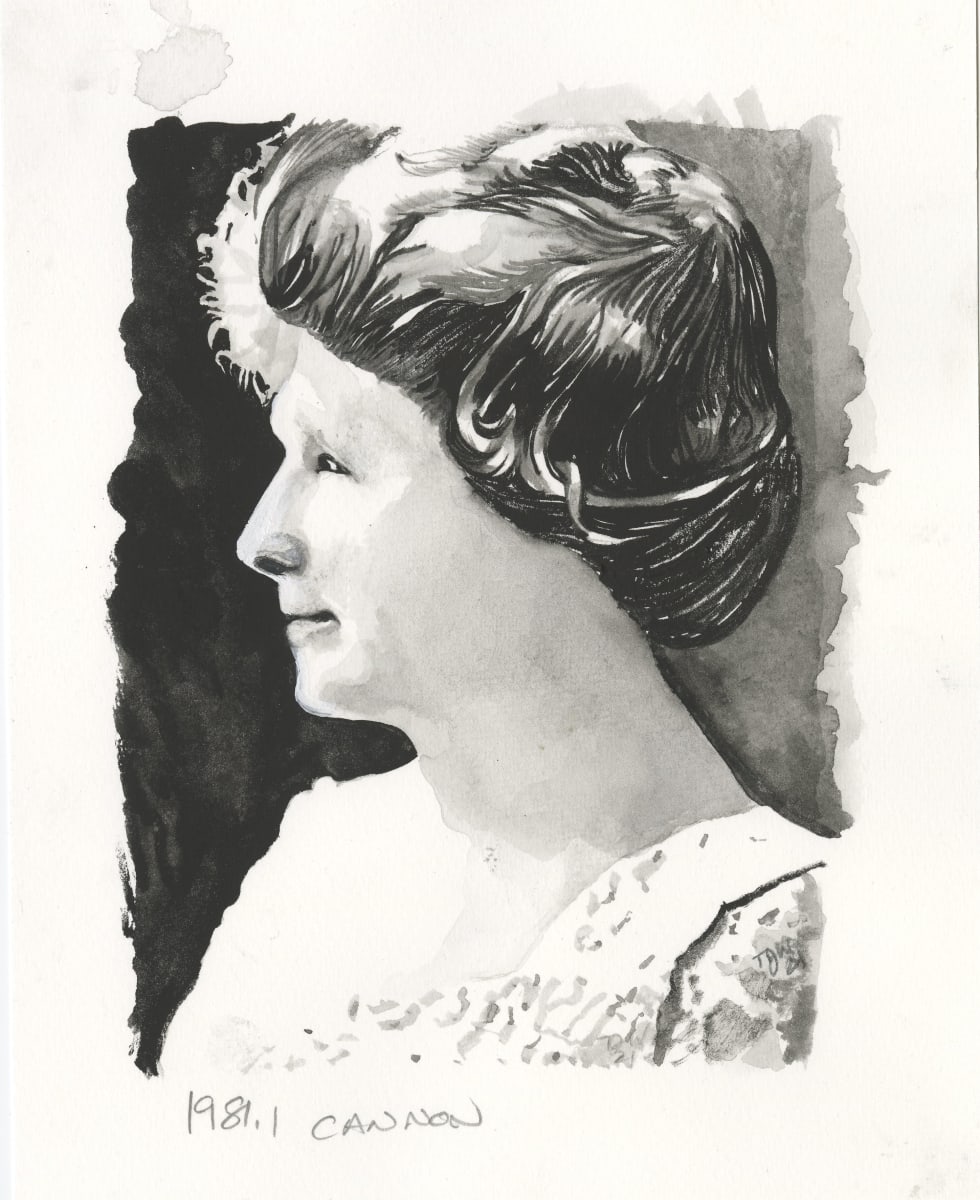Year Honored: 1981
Birth: 1863-1941
Born in: Dover, Delaware
Biography
Annie Jump Cannon brought nationwide fame to her native state as the birthplace of America’s foremost woman astronomer. She is known internationally for her system of classifying stellar spectra.
Born in Dover in 1863, Cannon, who was legally deaf, began to identify constellations from an attic observatory by candlelight when she was just a child – despite her father’s fears that she might set the house on fire. Cannon’s mother had been well educated through the Quaker system, and had passed her love of astronomy to her daughter.
Cannon attended Wellesley College to study astronomy and physics, though after completing her degree she pursued a career in photography. However, after the death of her mother, Cannon returned to Wellesley as a junior physics teacher. She also enrolled as a graduate student, and began to take classes at Radcliffe College – the women’s college associated with the all-male Harvard University. While there, she began working at the Harvard College Observatory under Edward Pickering. She participated in the first x-ray experiments in the country, and worked as an under-paid “computer,” cataloguing stars for the Henry Draper Catalogue.
Prior to completing her master’s degree, Cannon published her own catalogue of stars, predominantly based on temperature. Her system became known as the Harvard spectral classification system, and is still used today. During her 40-year career at Harvard, she discovered numerous stars, five novae, classified more than 250,000 stars and 400,000 stellar bodies.
In 1921, the University of Groningen in the Netherlands conferred upon Cannon the degree of Doctor of Sciences, the first woman to earn the title. She was also the first woman to receive an honorary degree from Oxford University. In 1938, after decades of work, she was finally appointed as a permanent faculty member at the Harvard College Observatory.
Cannon was an honorary member of the Royal Astronomical Society of Great Britain, and a member of the National Woman’s Party for women’s suffrage. A great deal of her money went towards scholarship funds for young women interested in astronomy.
Near the end of her life, Cannon said, “in troubled days, it is good to have something outside our planet, something fine and distant for comfort.” She died in Cambridge, Massachusetts in 1941.
____________________________________________________________________
Sources and Additional Readings
Alexander, K. L. (n.d.). Annie Jump Cannon. Annie Jump Cannon Biography. Retrieved October 19, 2021, from https://www.womenshistory.org/education-resources/biographies/annie-jump-cannon.
Annie Jump Cannon (1863-1941) - find a grave... Find a Grave. (n.d.). Retrieved October 19, 2021, from https://www.findagrave.com/memorial/6652470/annie-jump-cannon.
Annie Jump Cannon. Delaware Public Archives - State of Delaware. (2019, May 29). Retrieved October 19, 2021, from https://archives.delaware.gov/historical-markers-map/annie-jump-cannon/.
Annie Jump Cannon: Theorist of star spectra. Science Women. (n.d.). Retrieved October 19, 2021, from https://www.sdsc.edu/ScienceWomen/cannon.html.
Cannon, A. J. (n.d.). Papers of Annie Jump Cannon. Return to the HOLLIS for Archival Discovery main page. Retrieved October 19, 2021, from https://hollisarchives.lib.harvard.edu/repositories/4/resources/4134.
Delaware Commission for Women. (2006). Twenty-Fifth Anniversary: Hall of Fame of Delaware Women: The Legacy Endures.
Lewis, W. D. (n.d.). Delaware Miscellany Collection. Retrieved October 19, 2021, from https://library.udel.edu/special/findaids/view?docId=ead%2Fmss0598.xml%3Bquery.
Related links. Annie Jump Cannon - Related links. (n.d.). Retrieved October 19, 2021, from http://academics.wellesley.edu/Astronomy/Annie/links.html.
- Collections: 1981, Girls and Women in Science Day

